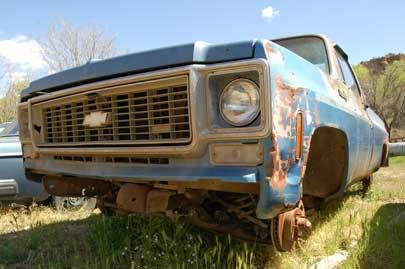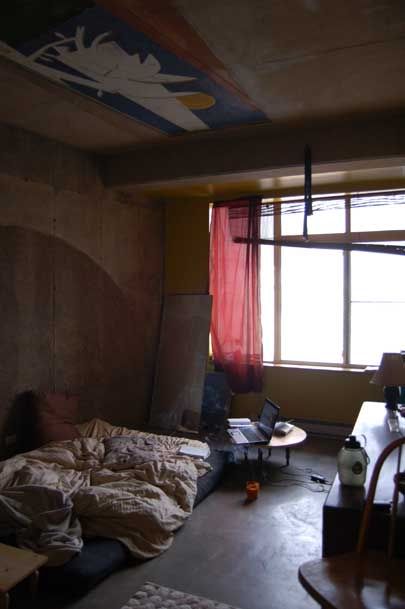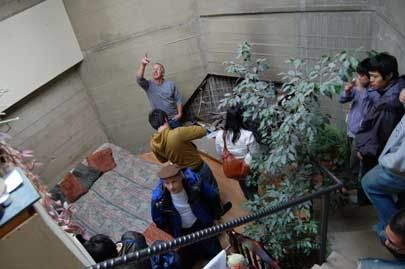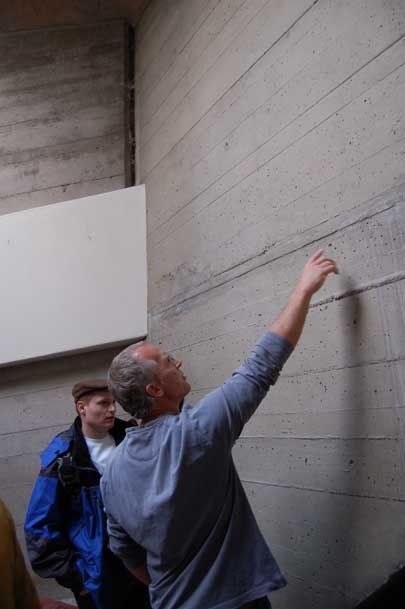This week has been the most physically exhausting week I have had in a long time. The workshop was put into construction work almost uniformly, and so our schedule consisted of going to work at 7:00 AM with pickaxes and shovels in hand. Thankfully they let us go early, typically around 2:30. But I have both gotten a tan thanks to this and probably gained a little bit of weight (in muscle, of course).
Regardless of the amount of work or the intensity of it, especially on Monday or Tuesday, I deeply enjoyed all of it. We worked near the site for La Loggia, what will eventually be a four story lodging complex—but the pool on the nearby cliff needed to be shored up first. The nature of construction here is confusing at times, even haphazard. This is due to the fact that Arcosanti was created almost by sheer force of volunteers over the decades. But because it's gone through so many design changes, there are no solidified "blueprints" for the site. Things that have to be fixed may have confusing or even nonexistent records of what work went on, where. So when we had to find the concrete footing for the pool, for example, we had to dig for it. No one at Arcosanti presently remembered where it was originally poured.
That said, I have no complaints about it. It's simply the nature of the site, and it adds to its uniqueness. As for myself though, working with a shovel and pickaxe, the labor of excavation was also part of the process of learning. The Zen masters had a saying: if you wanted to know the secret of Zen, you should chop wood and carry water.
That simple saying got me through most of the hours. Only a day ago I had been chopping carrots and cleaning celery for dinner, and I had applied the saying then. The secret of Zen is finding the peace, the contentment, in the monotonous and the simple. So when the chopping knife turned into a shovel, the same proverb was applied, except with just some extra force. And instead of chopping wood and carrying water, it was shoveling dirt and carrying boulders.
We didn't work only at the pool though, which will be an ongoing project. We did get to see some immediate fruits of our labor down at Camp (a small residency site at the bottom of the Arcosanti Mesa).
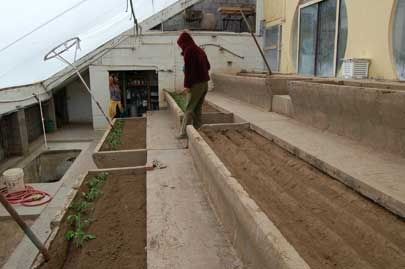
This is an experimental greenhouse. It looks nice now, but only because we had shoveled sand into the troughs up the stairs, which were sifted from the pure dirt excavated a truck drive away. I've never sweat so much in my life. Not only was it beginning to feel like Arizona weather that day, but we were in a greenhouse of all things, shoveling dirt upwards. And there was a lot of it. In the thick of it, it was a mess, it was dusty, and when I took the shower to get the dirt off, I literally watched the dust become mud and roll off my arms. But we got it done and it was planted the next day.
And the work was worth it. Do not be fooled by the small size of the greenhouse—it is only a prototype for data gathering. This greenhouse is a miniature version of the
Energy Apron, or a massive greenhouse that will run like a slanted river across the Mesa bluffs below Arcosanti proper. Its tiered structure allows for various microclimates to form, with varying temperatures on the way up. On a large enough scale, you would be able to grow enough food for export, year round, with everything from spinach to sunflowers. Aquariums could even be added on the supporting columns that would hold the transparent roof, allowing enriched water to feed the plants, and to get a crop of sea-dwelling life as well.
There is a big push in Arcosanti to get the Energy Apron completed, however small the steps towards such a huge project are or may seem. To me, the greenhouse is possibly the biggest bottleneck for Arcosanti right now. Arcosanti does not aim to be self-sufficient (i.e. secluded from the rest of the world), but it does want to be self-reliant and to be both an example for and trading partner with the surround towns. The greenhouse would draw attention as an agricultural center, making food a prime export and industry of this place. Arcosanti is already successful in agriculture with what it has. But in my opinion it has so much potential. With a system like an Energy Apron, this place could supply valuable crops year-round to restaurants in the Phoenix and Scottsdale area, without the massive logistical costs. I hear Arcosanti supplies the basil for a large number of Italian restaurants in the area for this very fact—and also the fact they can supply a lot of it in very fresh supply.
As the week ends though, my duties will probably shift to the graphic design side of things, which I am excited about. I'm excited about the possibility of being able to help shape the visual identity of this place. It is something of a dream come true, really. But I value the other experiences just as highly, as I know that they are just as valuable for me and the community here as well. And they are valuable personal lessons. There is a spartan quality to the life here that I enjoy. Or semi-spartan, really—wine and beer is in abundance, and much fun is had by all on Friday and Saturday nights (just ask about the "Avalanche Bar"—it involves alcohol, of course, and cliff-side construction sites, to give you an idea). It's interesting to note that the truly enjoyable aspects of life are enjoyable only when they are utilized in tandem with the hard, laborious aspects of life. The Taoist philosophy of the balance of opposites comes to mind: both aspects, in a whole, create each other, and one cannot exist without the other.
But compared to my life back "home," the simple, modest quality of life here is attractive. And not because it is romantic, but because it is realistic. And that fact is somehow nurturing.

One of the peacocks showing off down at Camp.

Riding on the back of a solar-powered golfcart with Darina and Erin (the sign on the front, not shown in the picture, says "no golfing permitted).











